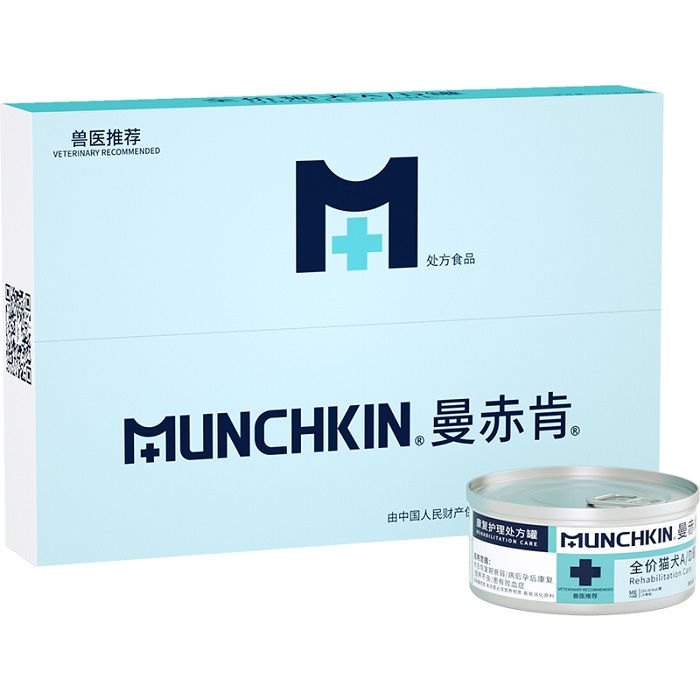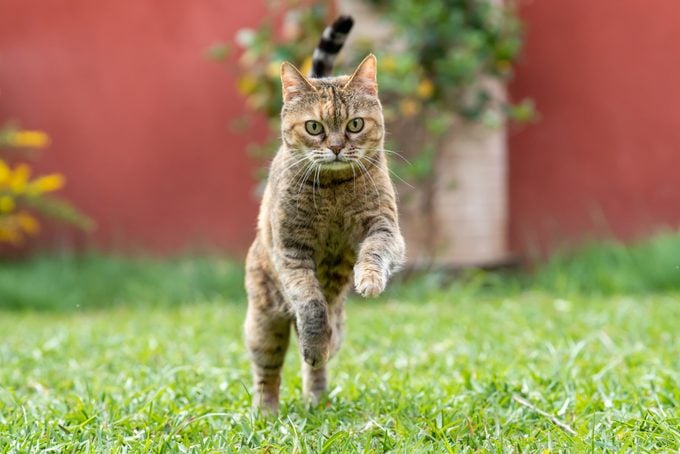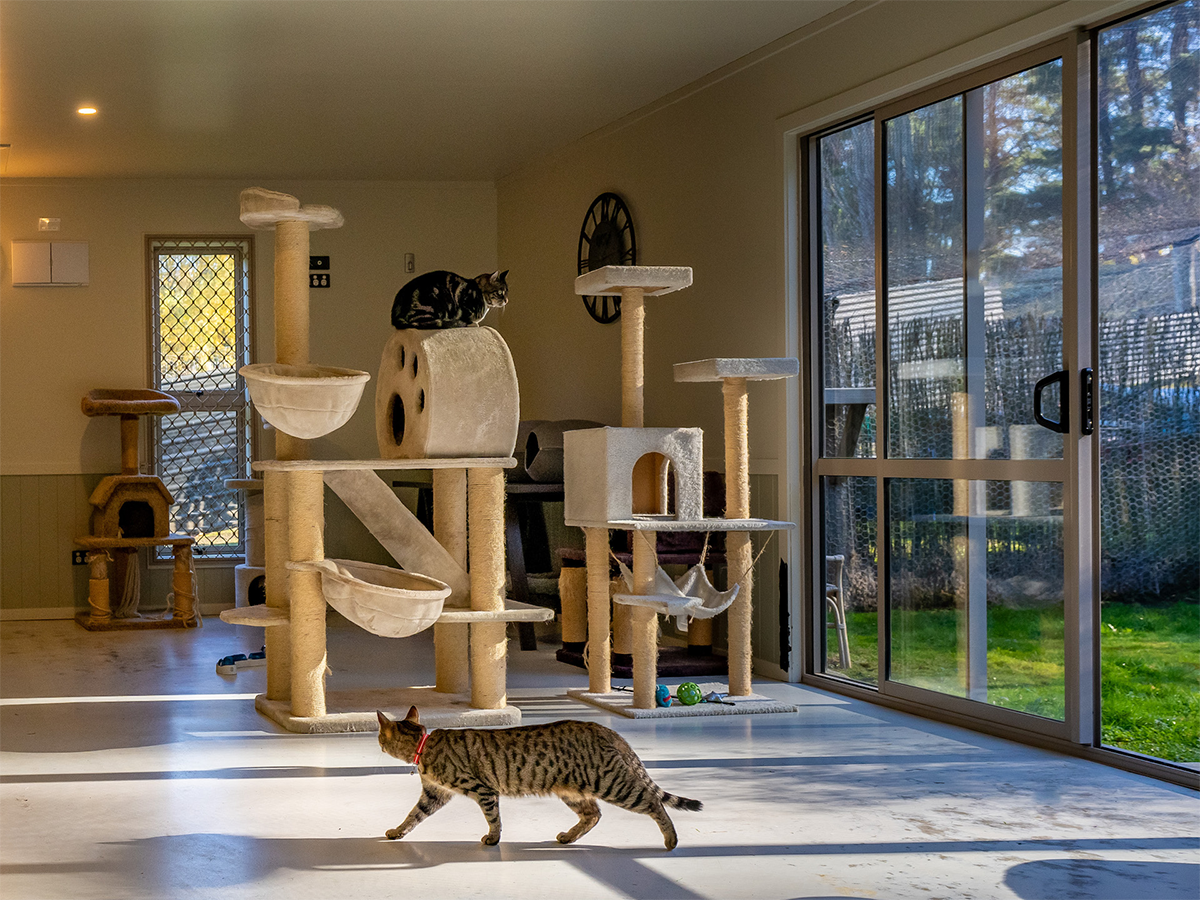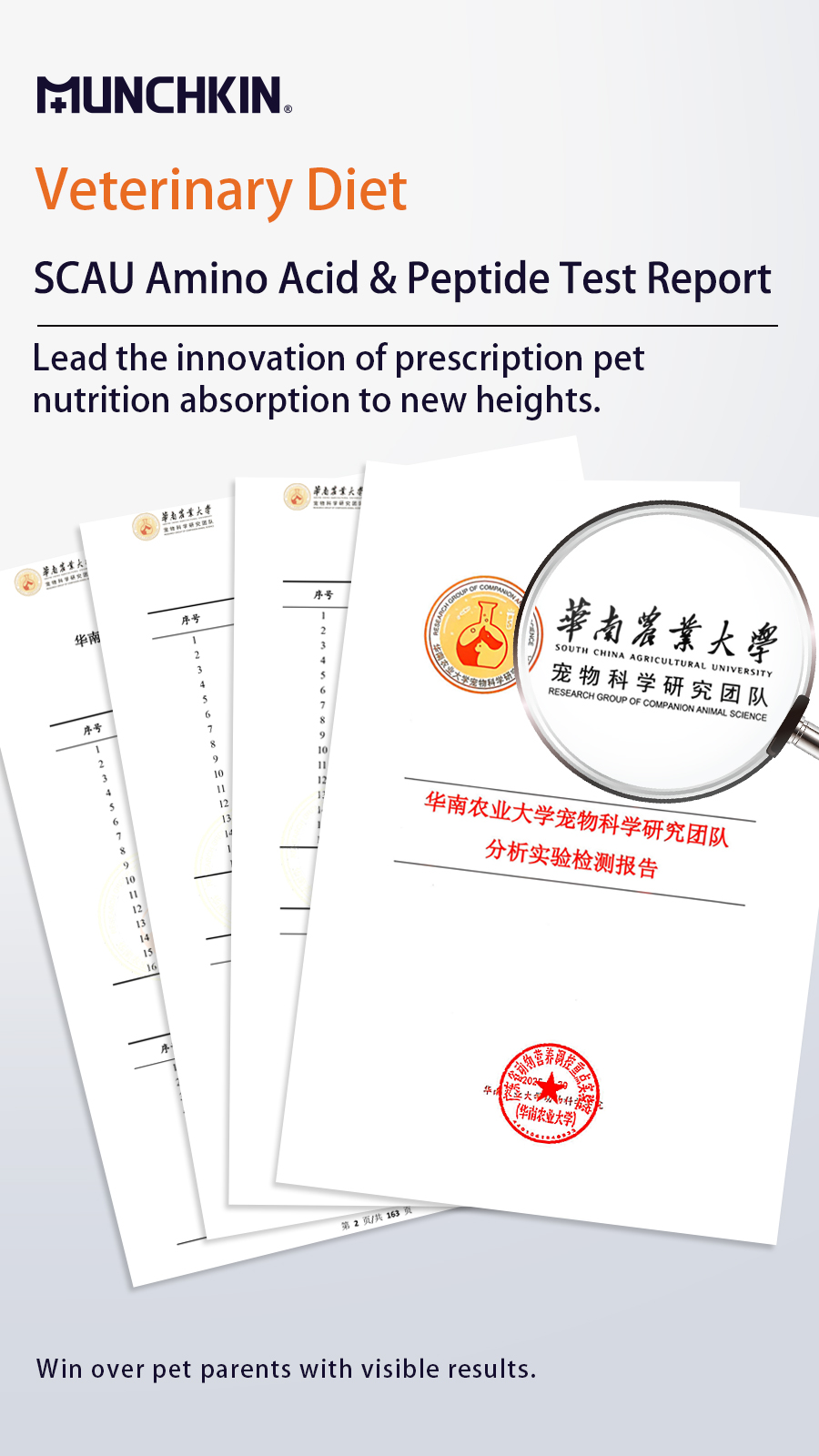
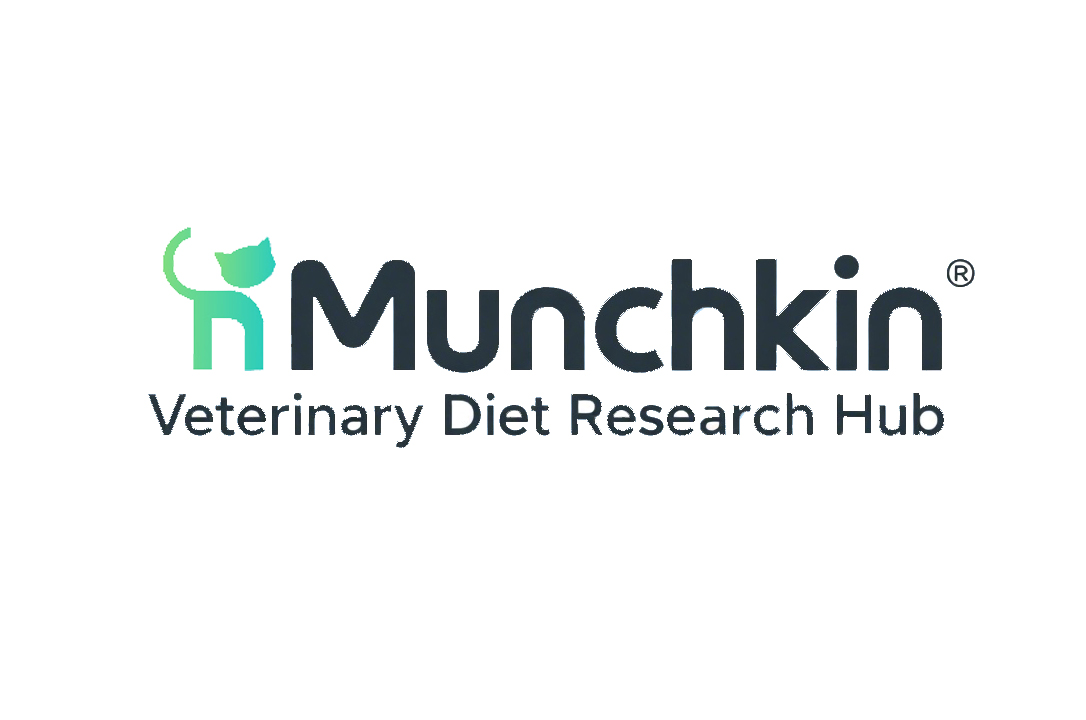
Validation of Munchkin OEM Veterinary Diet for Cat Recovery
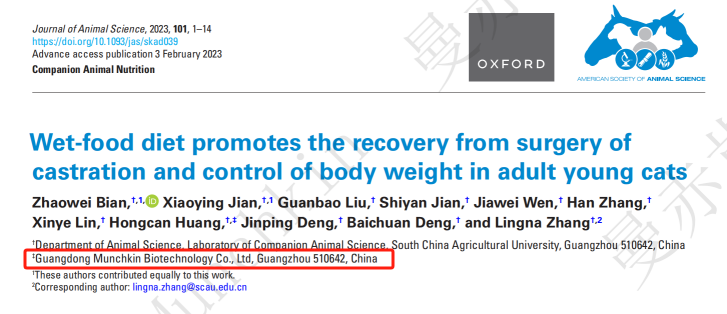
Journal of Animal Science, 2023,101,1-14
https://doi.org/10.1093/jas/skad039
Advance access publication 3 February 2023
Companion Animal Nutrition
Munchkin - Focus on pet clinical prescription nutrition
Abbreviations:
CAN, cats fed wet food which is the prescription A/D food offered by Munchkin.
BW,body weight; BCS, body condition score; DMl, dry matter intake; CON, control diet (i.e., dry extruded food); BUN/SC, blood urea nitrogen/serum creatinine.
Results indicated that BW, BCS and DMI in the CON group increased (P< 0.05) over time after castration, but were maintained relatively stable in the CAN group.
Cats in the CAN group exhibited less pain-related behavior as reflected by lower scores of comfort (P< 0.10) and vocalization (P< 0.10), improved wound surface assessment (P< 0.10), and higher levels of immunoglobulin G (IgG) on days 5 and 7.
A total of 18 healthy Ragdoll cats, 6 males and 12 females, with an average body weight of 4.33 ± 1.04 kg and aged 18 months old, were included in this experiment.

Cats were allocated to one of the two dietary treatments (whether fed AD prescription wet food). After a 5-day adaptation period to the experimental diets, the 18 cats in both groups were castrated in the same veterinary hospital and then transported back to the laboratory for a 6-week postoperative recovery and BW monitoring experiment.
Table 1. Effects of diets on apparent digestibility in cats

Conclusion: The apparent digestibility of dry matter, crude fiber, crude protein, and crude fat was significantly higher in the CAN group than in the CON group.
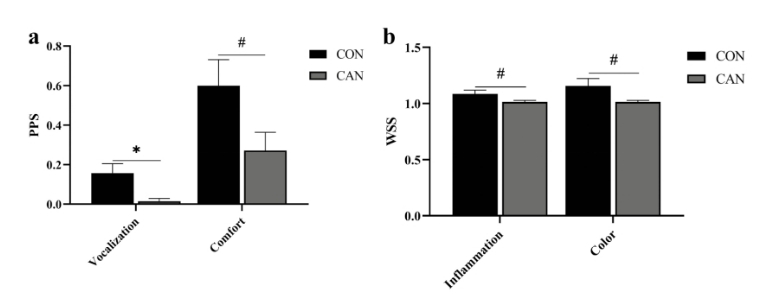
(a) PPS, Physical Pain Score, (b) WSS, Wound Surface Score.
Cats in the CAN group had lower scores for vocalization than the CON group, and the CAN group had slightly lower scores for inflammation and wound color.

The CON group had higher concentrations of lipase and higher ratios of blood urea nitrogen/serum creatinine (BUN/SC) on day 5, day 7, and day 11 compared to the CAN group (P<0.10). The levels of BUN in both groups showed a significant decrease on day 7 after surgery compared to day 5.
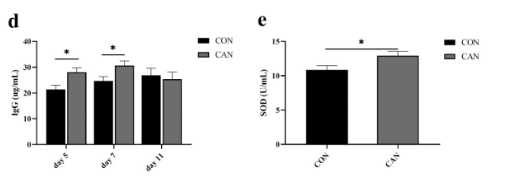
The CAN group had higher levels of IgG on days 5 and 7 than the CON group, and higher levels of superoxide dismutase (SOD) in the serum (P<0.05). SOD can inhibit various types of inflammation through its antioxidant action.
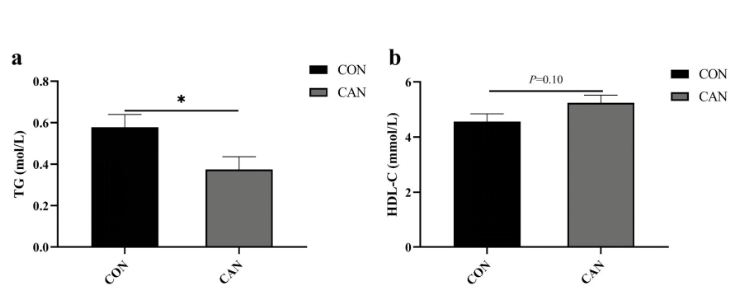
On day 20 and day 48, the CAN group had lower concentrations of triglycerides (TG) than the CON group (P<0.05). Only the effect of diet on high-density lipoprotein cholesterol (HDL-C) was significant (P<0.10). The concentration of HDL-C in the CAN group was higher than the CON group on day 20 and day 48. The primary clinical value of HDL-C is its ability to transfer foam cells from atherosclerotic plaques to the liver for excretion.
